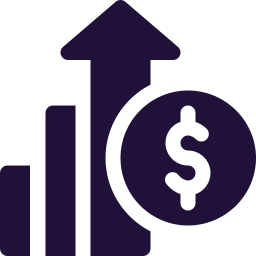In December 2020 lawmakers made significant changes in the IRS tax code section 7702, which regulates the tax advantages that you can get with life insurance. In this article, we will learn how these changes make permanent life insurance more attractive as an investment.
This article is written as general education, and should not be considered as personal financial advice. If you would like personal guidance with life insurance, you can schedule a time to talk with one of our experts.
What is IRS Section 7702?
Section 7702 are IRS rules that decide how life insurance is taxed. The last time it was updated in a major way was in the 1980s, when legislators wanted to stop people from abusing the tax advantages of the asset class by limiting how quickly they could put money into a policy, and making sure that people bought life insurance not only as a way of saving on taxes but also for the insurance itself.
These changes introduced the concept of a Modified Endowment Contract (MEC), which is a classification that certain policies could get which removes all of their tax advantages on withdrawals from the policies.
The main factor that affects whether a policy gets a MEC classification is how aggressively funded it is, which is decided by comparing the premium size to the size of the death benefit.
How the Funding Limitations Work
Whenever you are paying premiums for a permanent life insurance policy, you are generally paying for two things: the death benefit (ie. money that is paid out once the insured dies), and the living benefits (ie. cash value that is built up inside the policy, similar to an investment account).
When you are buying a permanent life insurance primarily as an investment, you want as much of your money as possible to go towards the cash value, and as little as possible towards the death benefit.
The limitations in the 7702 rules limit the amount of the premium that can go towards the living benefits versus the death benefit.
The exact ratio of this will vary by age, health, product type, and more, but in general, the rules limit the speed at which you can build cash value from premiums on a policy with a certain death benefit.
Essentially, these limitations make sure that you can’t maintain your tax advantages if too much of your premium is going towards the living benefits.
How the 7702 rules has Changed
While the specific details of the changes in the 7702 section are quite complex, the general effect that they have is that they allow a larger portion of the premium to go towards the living benefits versus the death benefits.
This means that with these new rules, policies can now be structured in such a way that more premium goes towards living benefits, which allows you to build cash value in your policy quicker.
For people using permanent life insurance primarily as an investment, this means that they can now fund their policies more efficiently, and buy less life insurance coverage in comparison to the cash value buildup.
For people using permanent life insurance primarily for the coverage, the new rules might not necessarily be good, as some policies will require a higher premium to be paid for the same death benefit as before the rule changes.
To understand this better, let’s take a bird’s-eye view at the factors involved in section 7702.
Understanding the Change in Actuarial Interest Rate Assumptions
The structure of life insurance policies are set by statisticians called actuaries, which uses things like life expectancy and interest rate assumptions to set prices for life insurance coverage.
If, for example, an actuary knows that a pool of clients are expected to live for another 40 years, and that they will yield 5 % on the money they manage, they can use that information to decide what the premium should be for a certain individual of that pool.
When the original 7702 rules were introduced, in the 1980s, interest rates around the world were much higher, which was reflected in the guidelines set around the interest rates that the actuaries can assume.
In these times, an interest rate of 4 or 6 % seemed extremely conservative, but as the world has experienced ever lower interest rates, especially post 2008, these assumptions have now become very high.
The result of this, for the life insurance companies, is that while the yields in their general accounts have been dropping, they have been forced to use the old interest rate assumptions to price their policies.
One of the features of the new changes in 7702 rules is that it allows insurers to lower these interest rate assumptions, which in effect means that you will have to pay more for the same death benefit, but that you can have a larger portion of your premium go towards your living benefits.
Why the Rules were Changed
Government officials states that the changes in section 7702 was necessary to give consumers “access to financial security via permanent life-insurance policies”, ie. promote the use of them as a safe haven asset, as well as to support life insurance companies to continue running a sustainable business.
From the regulators point of view, permanent life insurance is a sound investment for people to park their money in, and as the economy becomes increasingly unstable, it makes sense to allow people to do this more efficiently.
Additionally, as life insurance companies fill an important role in society, it makes sense to have regulations which allows them to adjust their interest rate assumptions to the current economy to improve solvency and financial stability.
How the Changes Affect indexed Universal Life Policies
For indexed life insurance policies, premiums are generally not guaranteed to stay the same over time, and so the risk as compared to whole life policies with guaranteed premiums is that the insurer can increase its fees, resulting in an increased premium.
While this risk is less scary than it sounds, as it can be mitigated by paying maximum premiums for a short amount of years or by exchanging your policy for another one if the charges increase, the changes of the 7702 rules reduce this risk even more.
As most of these fees that the insurer can change are based on the death benefit of the policy, the 7702 changes help reduce this risk, as it allows you to buy less death benefit and more cash value for the same premium.
The net effect of these changes is that it allows you to get better investment results by investing in indexed universal life insurance policies.
How the Changes Affect Whole Life Policies
While the effects on indexed life insurance are more straightforward, the effects on whole life insurance is a bit more convoluted, as the minimum return guarantees make whole life policies different.
While it is true that you will be able to put more money towards the policy in relation to the death benefit, you will also have to pay a higher premium to get the same death benefit you would’ve gotten with a certain premium prior to the rule change.
This is not necessarily good for whole life policies, as the cash value of whole life policies are guaranteed to equal the death benefit when the insured dies or at age 120, unlike universal policies, where the cash value can equal the death benefit earlier.
In addition, the lower assumed interest rates results in lower minimum guaranteed returns for whole life policies, where 4 % might become 3 or even 2 %.
While this might not affect returns substantially, it will affect the guaranteed element of the return within whole life policies, and leave a higher percentage at risk.
The good news is that policies that were designed prior to the changes in 7702 are still available to buy - but not for much longer, so if you want to lock in the prior guarantees it makes sense to look into getting a whole life insurance today.
If you buy one of the pre-change policies today, their guarantees will remain going forward as well.
In Conclusion
Overall, the changes of the 7702 rules are a good thing, as it allows you to get better investment results from investing in permanent life insurance and it allows the insurance companies to stay financially healthy going forward.
If you are interested in getting a new policy, or reviewing your existing policy, our experts are offering you a free consultation which you can book by picking a time below.
.png)




.png)



.png)


.png)









.png)
.png)
.png)



.png)


.png)
%20copy.png)
%202.png)




.png)
.png)
.png)